Shanghai: A Journey Through Time
Explore the vibrant streets of Shanghai on this immersive tour, where history meets modernity. Join us for a free walking tour that unveils the city’s hidden gems.
Time
3 Hours
Stops
9 Places
Distance
9.6 km
The Bund
The Bund is Shanghai's famous waterfront, known for its stunning skyline views and historical architecture, making it an ideal starting point for exploring the city's blend of East and West.
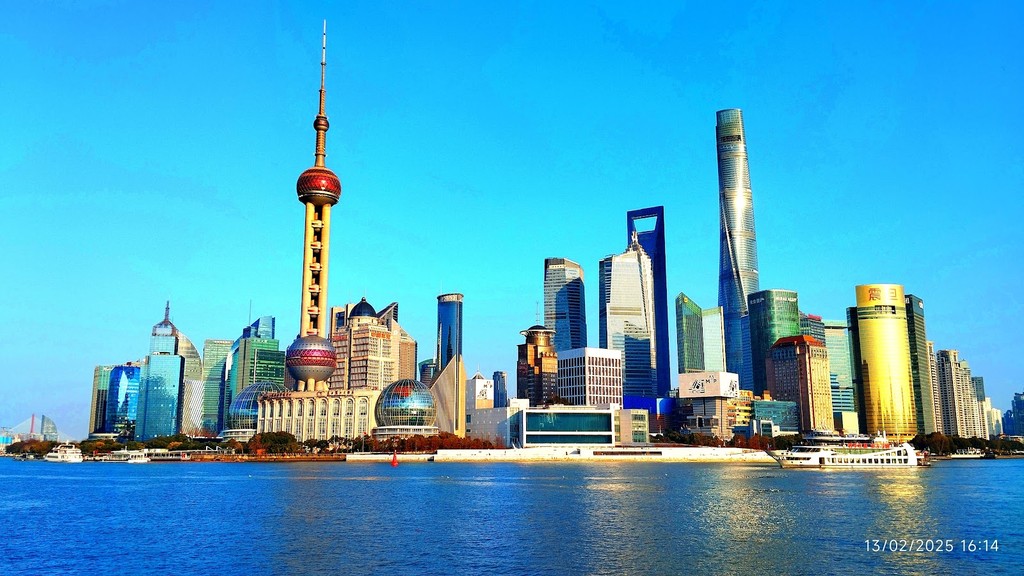
The Bund (Source: Google Maps)
The Bund is a historic waterfront area along the Huangpu River, boasting a stunning skyline that features a mix of Gothic, Baroque, and Art Deco architecture. Once the financial center of Shanghai, it showcases the city’s colonial past, with buildings that date back to the early 20th century. The Bund offers panoramic views of the modern skyline across the river, highlighting the contrast between the historic architecture and contemporary skyscrapers like the Shanghai Tower. This area is not just a visual feast; it is a cultural symbol of Shanghai's transformation and a gathering place for locals and tourists alike, especially during the evening when the skyline is illuminated.
Shanghai Tower
Just a short walk from The Bund, the Shanghai Tower is the tallest building in China and offers an impressive glimpse of modern Shanghai's architectural prowess.
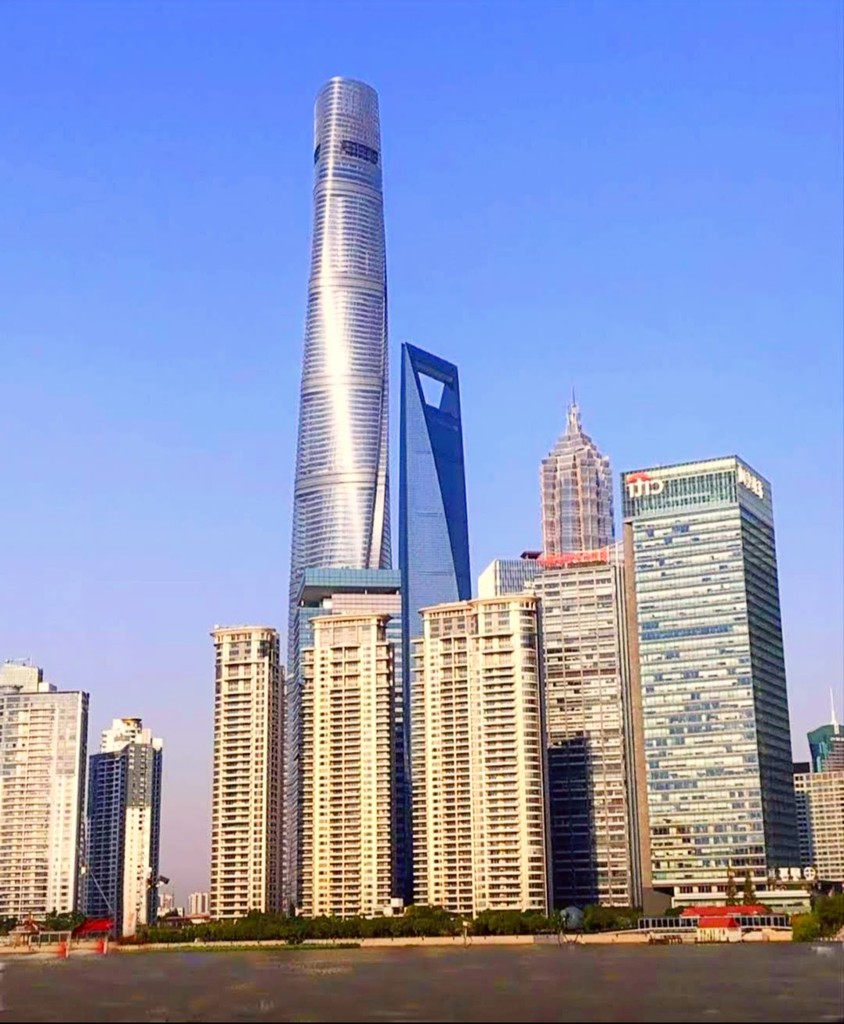
Shanghai Tower (Source: Google Maps)
Shanghai Tower, standing at 632 meters, is the tallest building in China and the second tallest in the world. Completed in 2015, its twisting design is inspired by traditional Chinese architecture, symbolizing harmony and balance. The tower houses a mix of commercial, hotel, and observation spaces. The observation deck, located on the 118th floor, offers breathtaking views of the city, allowing visitors to appreciate Shanghai’s vastness and its intricate urban layout. The building is also a model of sustainability, featuring energy-efficient systems and a unique double-skin façade that reduces energy consumption. Shanghai Tower represents the pinnacle of modern architectural innovation and is a vital part of the city's skyline.
Shanghai Old Street
Walking from the City God Temple, Shanghai Old Street showcases traditional Chinese architecture and offers a taste of the city's rich history.
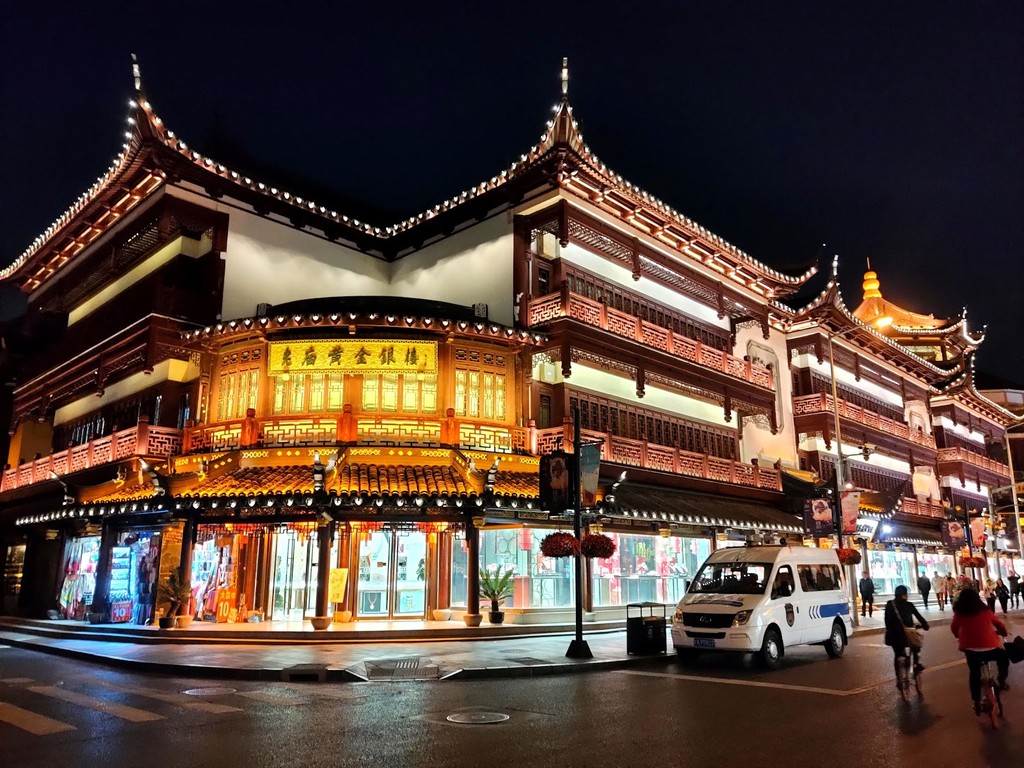
Shanghai Old Street (Source: Google Maps)
Shanghai Old Street is a vibrant area that showcases the city's rich history and traditional architecture. This pedestrian street is lined with ancient buildings, teahouses, and shops selling local crafts, offering a glimpse into the past. The area is often bustling with visitors who come to experience the authentic atmosphere of old Shanghai. Notable for its well-preserved structures, the street reflects the Ming and Qing Dynasties' architectural styles, with intricate carvings and traditional roof designs. Visitors can also enjoy local delicacies and traditional snacks from various vendors, making it a perfect spot to immerse oneself in Shanghai's culinary heritage. The Old Street serves as a reminder of the city's cultural roots amidst its rapid modernization.
City God Temple
Adjacent to Yuyuan Garden, the City God Temple is a Taoist temple that has been a place of worship for centuries, offering insight into local religious practices.
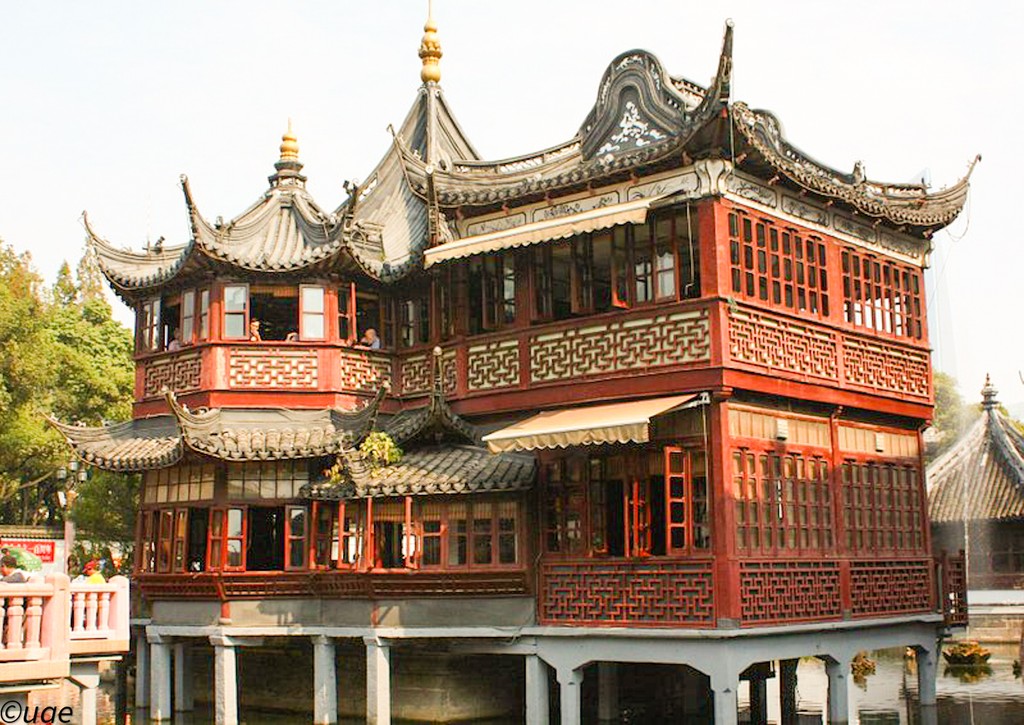
City God Temple (Source: Google Maps)
The City God Temple is a prominent Taoist temple located in the heart of Shanghai, dedicated to the city's patron deities. Originally built in the 1400s during the Ming Dynasty, it has been a place of worship for centuries and is renowned for its intricate architecture and serene atmosphere. The temple complex features beautiful halls adorned with sculptures and paintings that depict various deities and legends. Visitors can observe locals engaging in traditional religious practices, such as incense burning and fortune-telling. The surrounding area is bustling with shops and eateries, enhancing the spiritual experience with local culture. The City God Temple stands as a testament to Shanghai's rich spiritual heritage and the enduring significance of Taoism in Chinese culture.
Yuyuan Garden
A few minutes' walk from the Shanghai Tower, Yuyuan Garden is a classical Chinese garden that provides a serene escape and a peek into the Ming Dynasty's artistry.
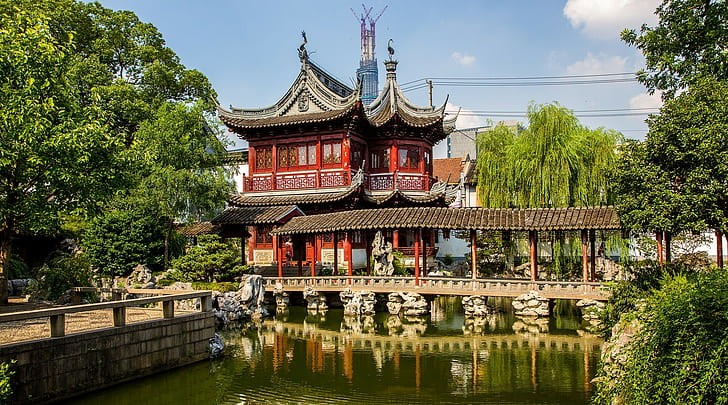
Yuyuan Garden (Source: Google Maps)
Yuyuan Garden is a classical Chinese garden that dates back to the Ming Dynasty, showcasing the artistry of traditional Chinese landscape design. Spanning over 20,000 square meters, the garden is renowned for its exquisite rock formations, ponds, and pavilions, creating a tranquil oasis in the bustling city. The garden’s design emphasizes harmony with nature, featuring winding paths and carefully placed plants that reflect the principles of Feng Shui. Visitors can explore various sections, including the Grand Rockery, the Exquisite Jade Rock, and the beautiful pavilions that offer stunning views of the surrounding scenery. Yuyuan Garden is not only a place of beauty but also a cultural landmark, representing the artistic achievements of the Ming Dynasty and the importance of gardens in Chinese culture.
Xintiandi
A modern and vibrant area known for its unique blend of Shikumen architecture and contemporary lifestyle, making it a great spot to explore Shanghai's evolving culture.
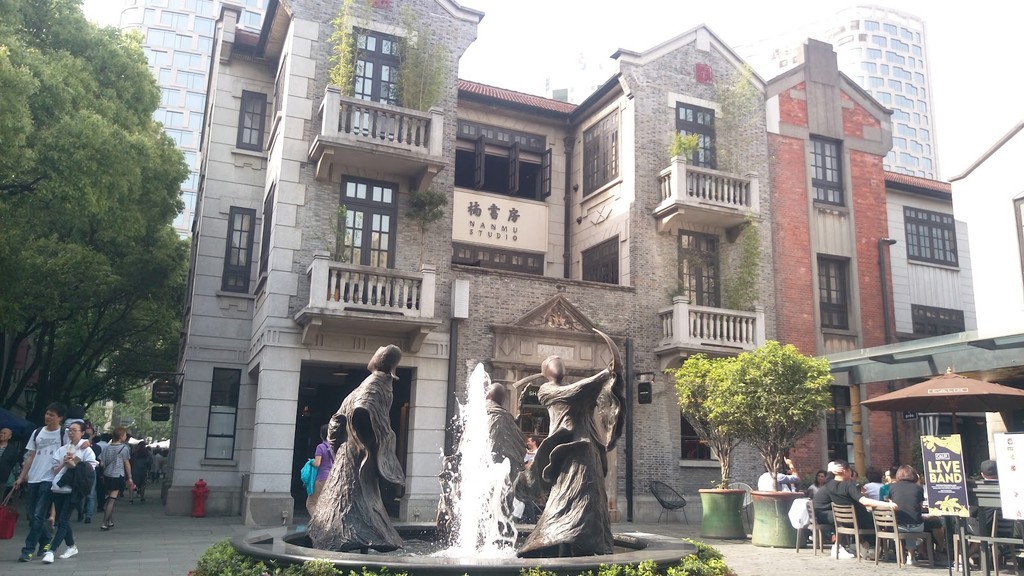
Xintiandi (Source: Google Maps)
Xintiandi is a modern shopping and entertainment district in Shanghai that beautifully blends traditional Shikumen architecture with contemporary lifestyle. The area features restored stone houses that date back to the 1920s, providing a glimpse into Shanghai's past while housing upscale restaurants, boutiques, and cafes. Xintiandi is a vibrant hub for both locals and tourists, offering a lively atmosphere, especially during evenings when the area comes alive with music and entertainment. The district is often seen as a symbol of Shanghai's rapid modernization and cultural evolution, showcasing how the city preserves its heritage while embracing modernity. It is an ideal destination for those looking to experience the dynamic cultural scene of Shanghai.
Fuxing Park
Continuing from Tianzifang, Fuxing Park is a French-style park where you can observe locals practicing tai chi or playing traditional Chinese instruments.
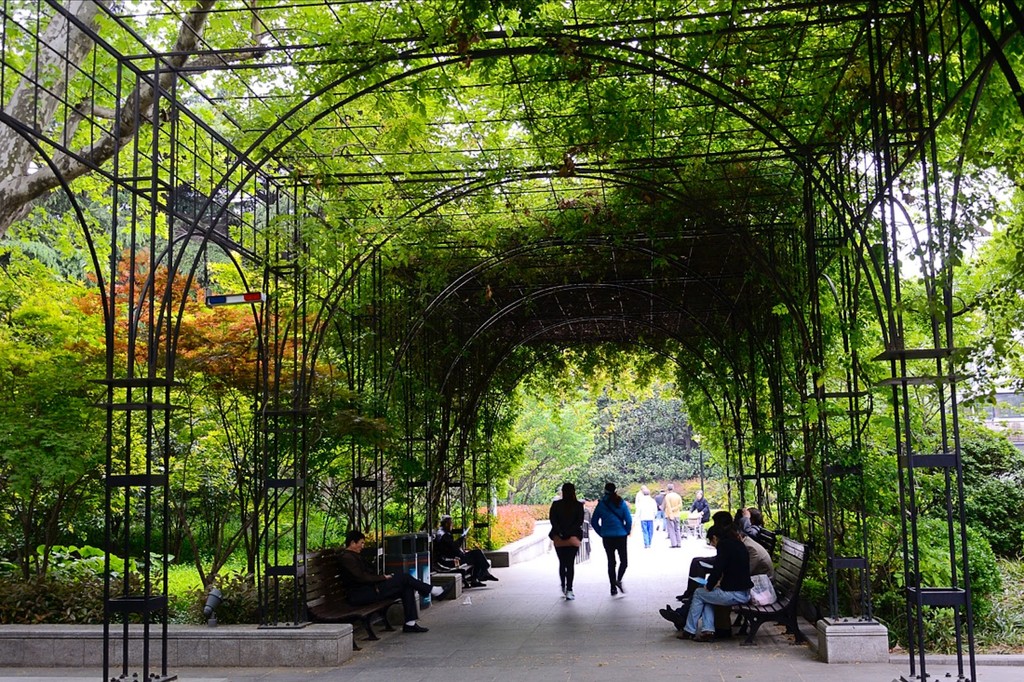
Fuxing Park (Source: Google Maps)
Fuxing Park is a picturesque French-style park located in the former French Concession of Shanghai. Established in the 1900s, the park features lush greenery, beautiful flower beds, and charming pathways that invite visitors to relax and unwind. It is a popular gathering spot for locals, who can be seen practicing tai chi, playing traditional Chinese instruments, or enjoying leisurely strolls. The park's design reflects a blend of Western and Chinese influences, with elegant fountains and classical sculptures. Fuxing Park also hosts various cultural events and exhibitions, making it a vibrant part of the community. This serene location provides a refreshing contrast to the city's hustle and bustle, allowing visitors to experience the local lifestyle in a tranquil setting.
Tianzifang
A short walk from Xintiandi, Tianzifang is a maze of narrow alleys filled with artsy shops, cafes, and galleries, reflecting the city's creative spirit.
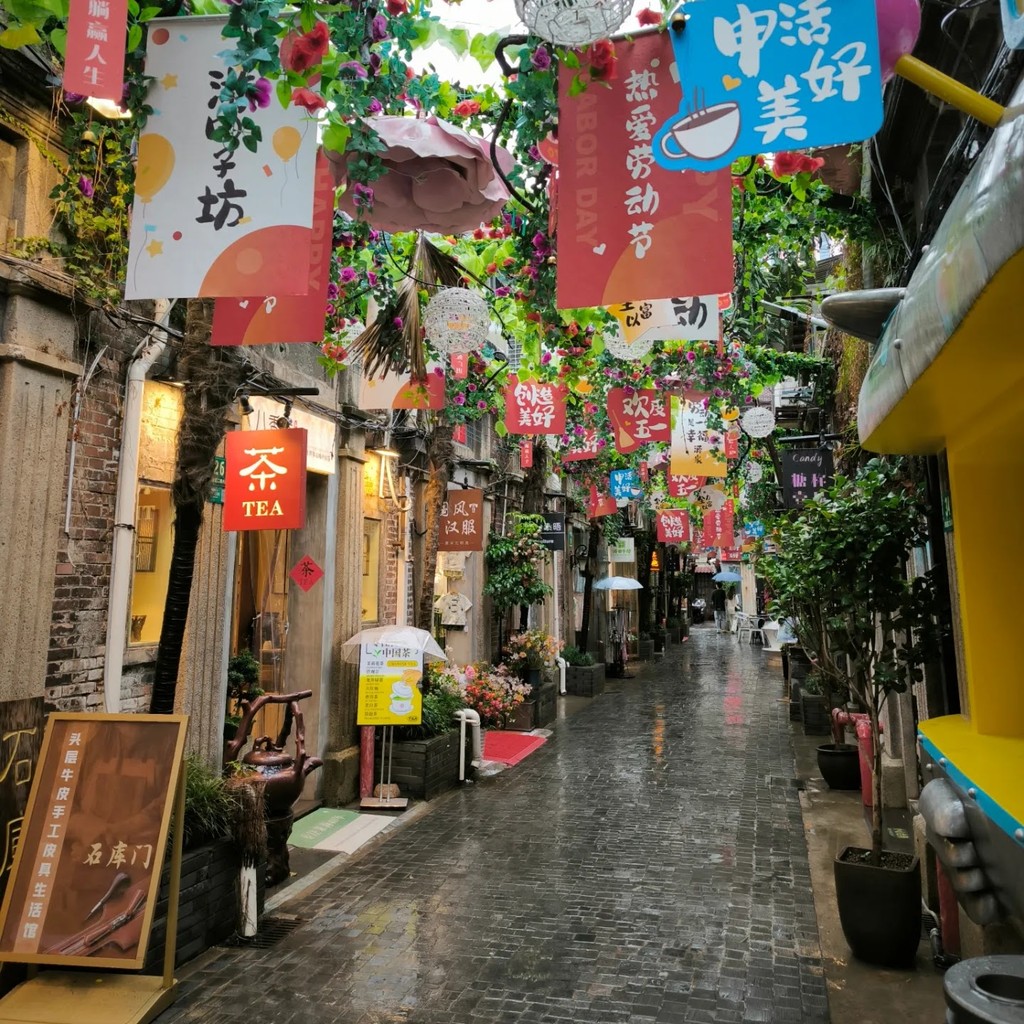
Tianzifang (Source: Google Maps)
Tianzifang is a unique arts and crafts enclave located in the former French Concession of Shanghai, known for its narrow alleys and vibrant atmosphere. Originally a residential area, Tianzifang has transformed into a creative hub filled with art studios, galleries, and boutique shops. The architecture retains its traditional Shikumen style, featuring stone houses with quaint courtyards. Visitors can explore a maze of lanes lined with cafes, craft shops, and galleries showcasing local artists' work. The area is also famous for its street art and cultural events, making it a popular destination for those seeking to experience Shanghai's creative spirit. Tianzifang embodies the city's blend of tradition and modernity, reflecting the flourishing arts scene in Shanghai.
Former French Concession
Ending the tour at the Former French Concession, this area is famous for its tree-lined avenues and colonial architecture, offering a picturesque glimpse into Shanghai's international past.
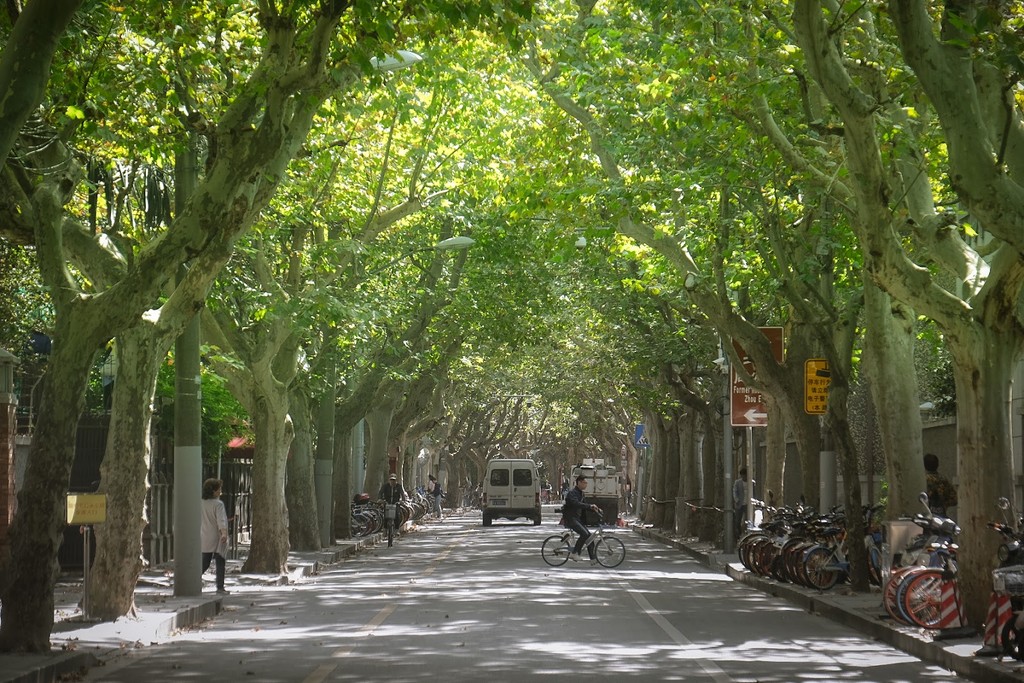
Former French Concession (Source: Google Maps)
The Former French Concession is a historic district in Shanghai, renowned for its tree-lined streets and colonial architecture. This area was established in the mid-19th century when Shanghai was opened to foreign trade, and it became a hub for expatriates and affluent locals. The architecture features a mix of European styles, including Victorian, Art Deco, and Beaux-Arts, creating a charming and picturesque atmosphere. The district is home to a variety of cafes, boutiques, and galleries, offering a glimpse into the city's cosmopolitan past. Walking through the Former French Concession allows visitors to appreciate the cultural richness and diversity that has shaped Shanghai over the years. It stands as a symbol of the city’s historical connections with the West and its ongoing evolution.

Your travels, your rules.
Create your own Free Walking Tours.
Set your preferences, distances and anything you want to do or see.
Completely free, no payment required.